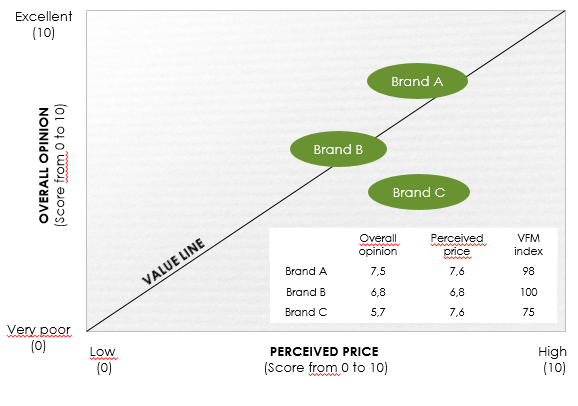The Touch Point Model®, a brand diagnosis with MCA® inside
Our methodology, the Touch Point Model®, developed in partnership with Strategic Research, combines:
- The world’s best practice tool for measuring the effectiveness and efficiency of touchpoint strategies: this tool is the MCA®, or Market ContactAudit®;
- With a brand module aimed at understanding this touchpoint strategy in the context of the brand’s key parameters such as its bottlenecks within a sales funnel, its price /equity perception, its desirability, its territory, etc.. In a nutshell, key performance indicators of its sales mix, so that the diagnostic is single sourced and complete (communication mix measured by MCA®, sales mix measured by the brand module).
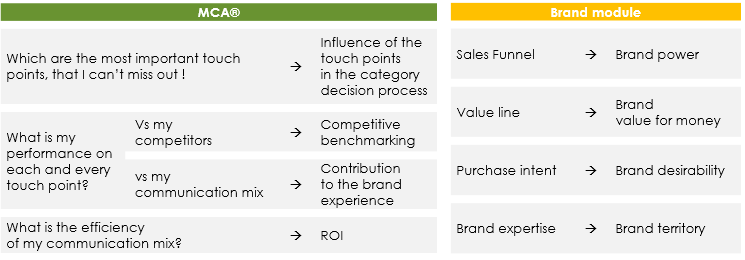
#1 MCA® module
The MCA® model: A unique approach
- MCA® stands for Market ContactAudit®
- It is category and market specific.
- It’s a consumer-based approach, relying on a quantitative survey of a representative sample (circa 1000) of buyers / consumers of every audited category.
- It measures the “impact” (what consumers perceive) NOT the “emission” (what consumers receive): it’s an outcome indicator vs. an input measure.
- It’s the only tool capable of embracing all possible touchpoints.
- MCA®’s key innovation is to provide the “metrics” platform to introduce accountability in marketing communications (marcoms) by measuring through a universal metric – a common currency called the Brand Experience Point (BEP)- the effectiveness of a brand’s diverse marcoms initiatives from the consumers’ perspective.
How does MCA work
MCA®’s key insight is to divide the problem into two componenst: understanding the category’s key drivers on the one hand, understanding the brands’ performance on the other hand.
For understanding the category’s key drivers, the MCA® measures contact or touchpoint influence on consumer attitudes and behavior towards brands in a given category through an influence indicator called Contact Clout Factor (CCF).
It’s like knowing the course weights in any given discipline. It tells you with courses weights more than other in the final grade. These weights are the same for all students.
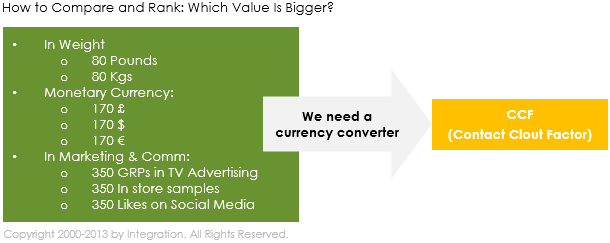
To follow up on our analogy, it’s like knowing students grades. They differ from student to student, but this has no effect on the course weights, measured before.
The common currency called the Brand Experience Point is defined as brand – contact association x contact influence indicator. It’s the weighted grade.
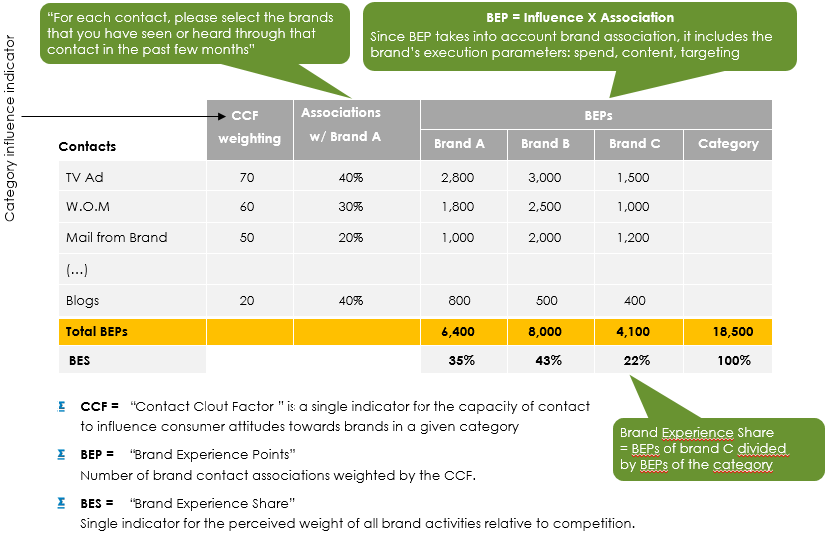
Examples of MCA® key outputs
Category learning: Influence indicators (CCF) at category level
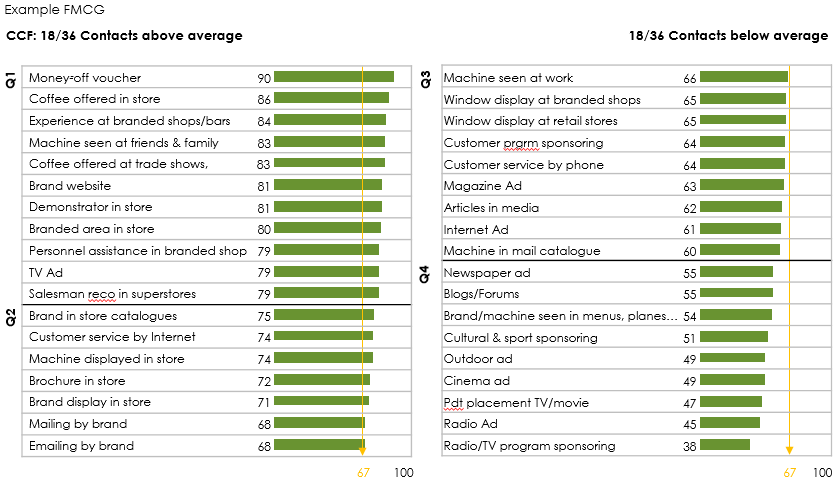
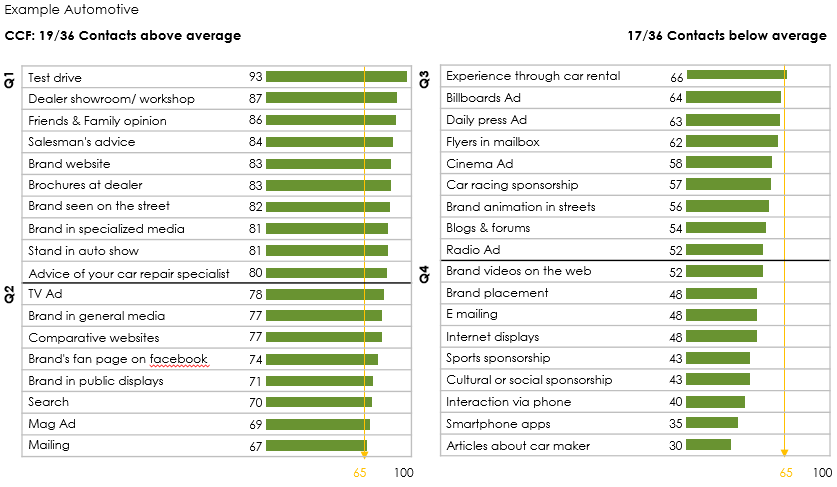
Cost Efficiency Learning
Linking spend with touchpoint impact allows to establish cost efficiency per touchpoint and for the brand total. This way, the brands understand the cost efficiency of its entire communication mix in the same metric, the cost per Brand Experience Point.
Example: in the below table, this insurance brand spends 3 times more on in-store agents than on cinema advertising. Yet, because in-store agents deliver much more impact (as measured by brand experience points) than cinema advertising, the former is roughly 3 times more efficient than the latter, since its cost per brand experience point 2000 € compared to 5882€.
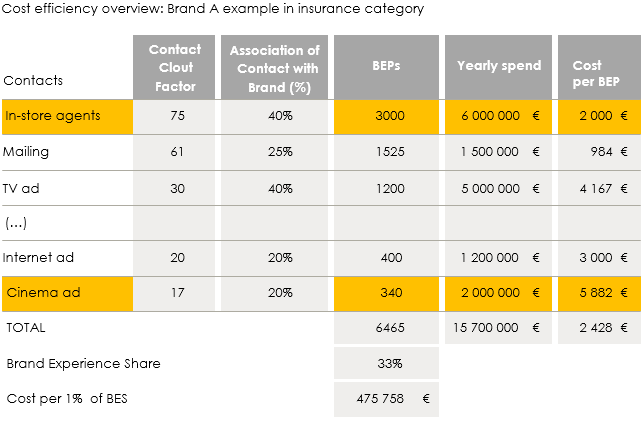
#2 Brand module
How it works
Brand modules are completely customized for every client. We present here some of most frequent parameters we measure. These could easily be replaced or completed by others that might be more relevant for the case at hand, for example a price sensitivity analysis, a focus on the performance of product variants to provide guidance on resource allocation within a family of products under the same umbrella brand, etc..
Examples of outputs
The brand module answers different questions regarding the brand. Among them:
Where do I need to focus on to make my marketing efforts more productive?
The Touch Point Model® Sales Funnel makes it possible to measure a brand’s capacity to convert awareness into, consideration, purchase and finally loyalty. It helps focusing the brand’s efforts where it encounters difficulties or resistance.
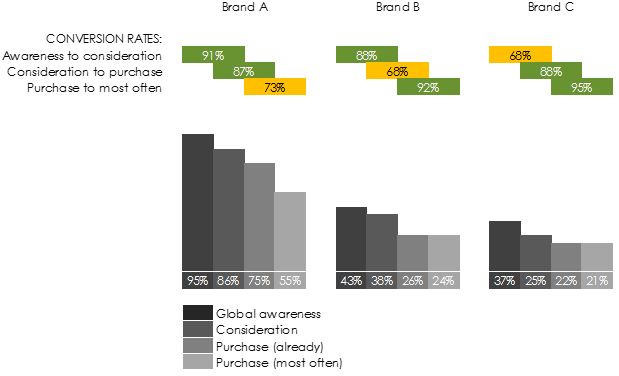
Is my brand really worth its price?
The Touch Point Model® Value line indicates whether or not the price is justified vs.the equity perception. We compare its resulting “value for money” index to those of its direct competitors.
